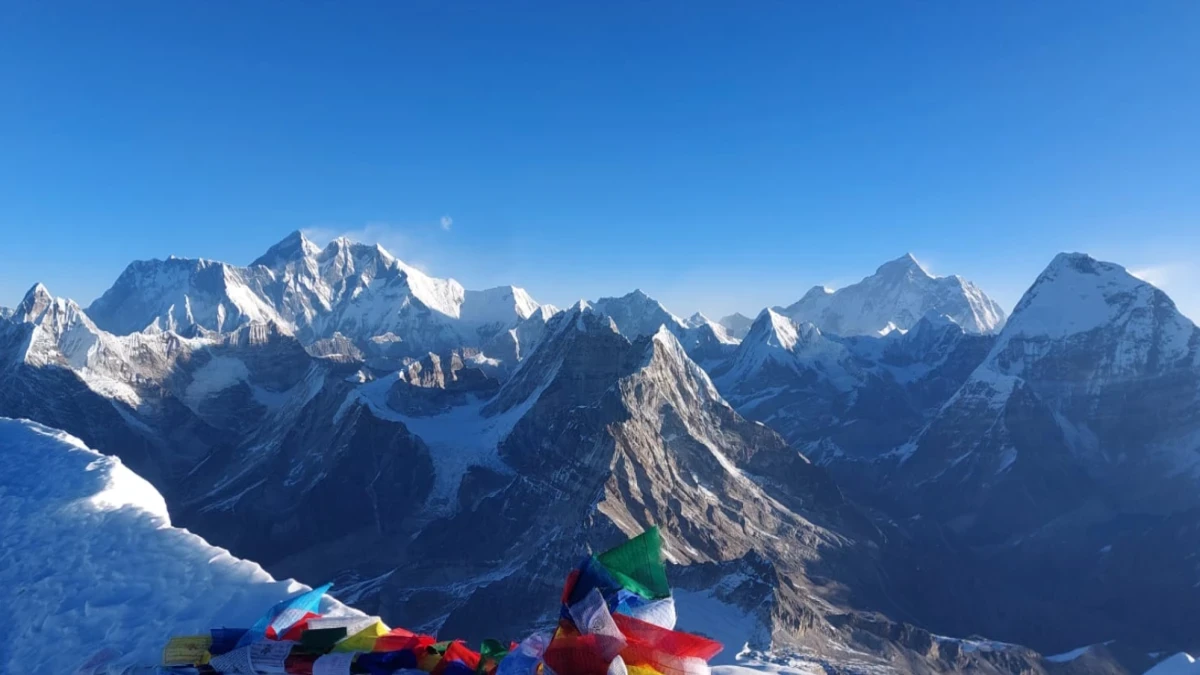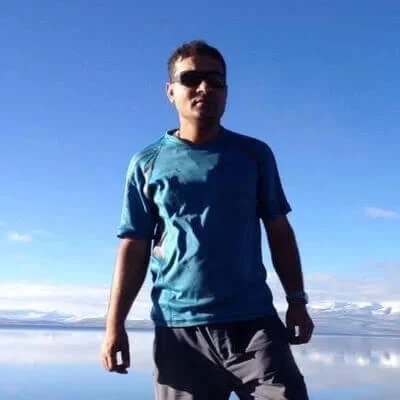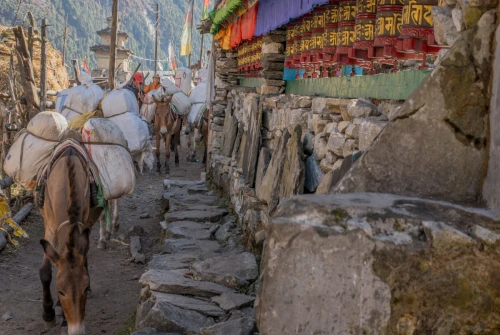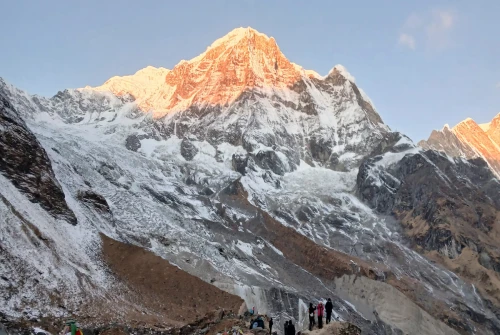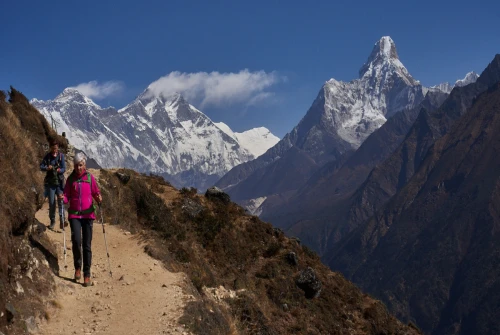Dreaming of climbing in Nepal? Big changes are coming in 2025. The Nepal Mountaineering Association (NMA) has increased peak climbing permit fees to support better safety, sustainability, and trail conditions. Whether you're aiming for the mighty Mera Peak or the classic Island Peak, it’s time to rethink your expedition strategy. Join All Nepal Hikingas we explore what these updates mean for your next Himalayan adventure.
Nepal Peak Climbing Permit Cost 2025
Nepal is globally recognized as the ultimate destination for high-altitude adventure, attracting thousands of climbers every year. With over 1,300 peaks, including the world’s tallest Mount Everest Nepal offers an unmatched range of mountaineering experiences. Among these, “trekking peaks” provide an ideal opportunity for climbers seeking adventure without the extreme challenges of 8,000-meter giants.
These trekking peaks typically range between 5,500 to 6,500 meters, offering a perfect blend of trekking and technical climbing. Peaks such as Island Peak (Imja Tse), Mera Peak, Lobuche East, and Chulu Far East are popular among both novice and seasoned climbers.
To regulate this growing interest, the Nepal Mountaineering Association (NMA) oversees 27 such designated trekking peaks, ensuring legal access, environmental protection, and climber safety.
Whether you're looking to stand atop a Himalayan summit for the first time or are preparing for bigger 7,000–8,000m expeditions, peak climbing in Nepal serves as an unforgettable and preparatory adventure.
NMA Peak Climbing Permit Cost Effective from September 2025
The Nepal Mountaineering Association (NMA) has officially announced a revision in peak climbing permit costs for all 27 trekking peaks under its administration. This updated fee structure will come into effect from the Autumn Season (September) of 2025.
This decision comes as part of NMA’s ongoing efforts to enhance sustainable mountaineering practices, support mountain conservation, and improve climbing infrastructure across the Himalayas.
About the Nepal Mountaineering Association (NMA)
The Nepal Mountaineering Association (NMA) was established in 1973 as a non-governmental, non-profit organization committed to the development, promotion, and regulation of mountaineering activities in Nepal. It operates under the supervision of Nepal’s Ministry of Culture, Tourism, and Civil Aviation, and plays a vital role in shaping the country’s mountain tourism industry.
The NMA is specifically entrusted with the management of 27 trekking peaks, often referred to as NMA Peaks, which range from moderate to technically challenging climbing routes. These peaks are all below or near 6,500 meters in elevation, and are separate from the major expedition peaks (over 6,500m, 7,000m, and 8,000m), which fall under the jurisdiction of the Department of Tourism (DoT).
Key Objectives and Responsibilities of the NMA:
Issuing climbing permits for 27 designated trekking peaks
Promoting responsible and safe mountaineering practices
Facilitating training programs for mountaineers and guides
Supporting environmental conservation and waste management in Himalayan regions
Coordinating with government bodies and international agencies to enhance Nepal’s reputation as a premier climbing destination
NMA’s Role in Nepal's Climbing Ecosystem
By regulating access to some of the most iconic trekking peaks such as Island Peak, Mera Peak, Lobuche East, Pisang Peak, and Chulu Far East the NMA provides an entry point for thousands of climbers each year who seek a high-altitude challenge without the extreme conditions of 8,000-meter giants.These trekking peaks serve as:
Preparation climbs for larger Himalayan expeditions
Adventure goals for experienced trekkers
Accessible summits for those seeking to experience technical climbing at moderate altitudes
In doing so, the NMA not only supports sustainable mountain tourism but also contributes significantly to the local economy, creating employment opportunities for guides, porters, trainers, and tourism entrepreneurs in remote mountainous regions.
Partnership & Global Standing
The NMA also works in collaboration with international climbing federations and alpine clubs to align Nepal’s mountaineering practices with global safety and environmental standards. Its efforts have positioned Nepal as a world leader in trekking and alpine tourism, welcoming adventurers from all continents year after year.
Why the NMA Increased Peak Climbing Permit Fees?
In a significant move, the Nepal Mountaineering Association (NMA) has revised the climbing permit costs for all 27 NMA-managed trekking peaks, effective from September 2025. But what prompted this fee hike?
According to official statements, the price revision is not merely about revenue generation. Instead, it aligns with a broader strategy to promote sustainable and responsible mountain tourism across Nepal’s trekking and climbing regions.
Stated Objectives Behind the Cost Increase
The NMA outlines several key goals behind this permit price adjustment:
Promote Sustainable Mountain Tourism
With growing numbers of trekkers and climbers each year, the environmental footprint has become a major concern. The revised pricing is aimed at managing visitor flow and ensuring that Nepal’s fragile alpine ecosystems are preserved for future generations.Improve Trail Infrastructure and Safety
A portion of the increased fees will be allocated to trail maintenance, signage, communication facilities, and emergency rescue infrastructure, especially in remote high-altitude areas. This is crucial for both climber safety and local livelihoods.Enhance Mountain Management
Upgrading the permit system and strengthening monitoring and regulation on NMA peaks is another priority. This includes verifying climber qualifications, guide certifications, and ensuring proper waste disposal and environmental compliance on high-altitude routes.Invest in Environmental Protection
Mountains in Nepal face increasing challenges from glacial retreat, pollution, and overcrowding. The updated permit pricing is expected to support local conservation efforts, including awareness campaigns and eco-friendly climbing practices.
Industry Reaction: Mixed but Forward-Looking
The response to the new climbing permit fee increases has been varied across different groups involved in Nepal’s mountaineering industry. Among international climbers, opinions are divided; some express concern over the rising costs, especially independent adventurers and smaller expedition teams who may find the higher fees prohibitive. However, others recognize the importance of improved regulation and are supportive of measures aimed at ensuring safer and more sustainable climbing experiences.
Trekking agencies generally appreciate the increased clarity in permit pricing and the emphasis on quality and sustainability. At the same time, many caution that the higher fees could discourage budget-conscious climbers, potentially reducing the overall number of expeditions and impacting the volume of business. They stress the need for a balanced approach that maintains Nepal’s appeal while supporting environmental and safety goals.
Local mountain communities tend to view the changes positively. They are hopeful that the additional revenue generated from the fee hikes will translate into better income opportunities, increased employment, and improved maintenance of trails and infrastructure. This, in turn, would enhance the overall trekking and climbing experience while supporting the well-being of those who depend on tourism for their livelihoods.
New Peak Climbing Permit Cost (Effective September 2025)
In a landmark revision, the Nepal Mountaineering Association (NMA) has officially updated the climbing permit fees for all 27 NMA-managed trekking peaks, effective from the Autumn season (September 2025). These revised rates apply to both foreign and Nepali climbers, with distinct seasonal pricing to encourage off-peak mountaineering and support sustainable tourism.
Permit Fees for Foreign Climbers (Per Person)
Season | Peak ≤ 6,500m |
Spring (High) | USD 350 |
Autumn (Mid) | USD 175 |
Winter/Summer | USD 175 |
Spring Season Price Increased by USD 100 previously USD 250, now USD 350.
Autumn and Winter/Summer seasons offer a 50% and 75% discount respectively compared to peak rates, making them attractive alternatives for budget-conscious climbers.
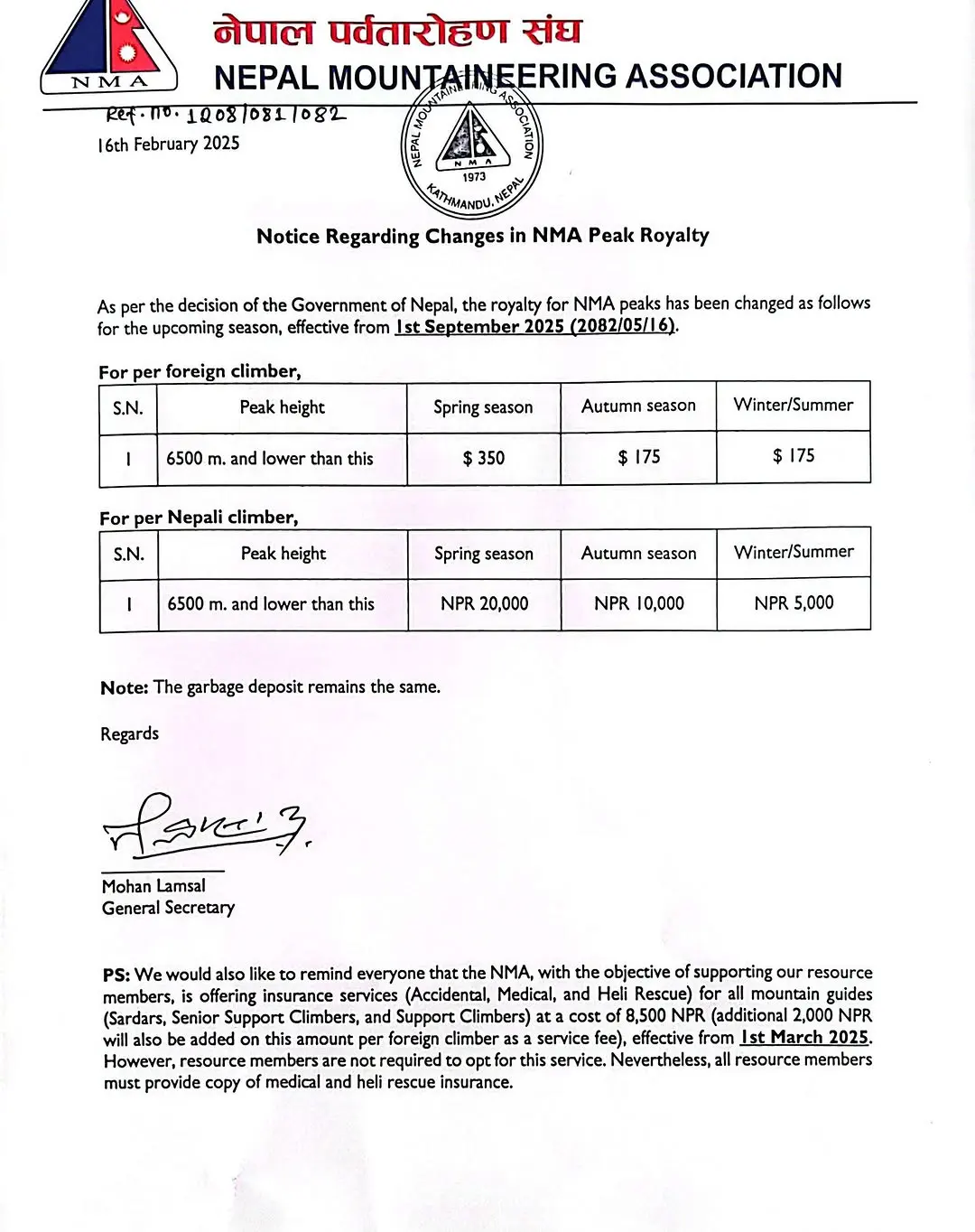
Permit Fees for Nepali Climbers (Per Person)
Season | Peak ≤ 6,500m |
Spring (High) | NPR 20,000 |
Autumn (Mid) | NPR 10,000 |
Winter/Summer | NPR 5,000 |
These updated fees aim to balance affordability for domestic climbers while contributing to trail development and mountain safety.
What About NMA Peaks Over 6,500 Meters?
Among the 27 trekking peaks under NMA regulation, two exceed 6,500 meters in elevation:
Singu Chuli (Fluted Peak) – 6,501 meters (Annapurna Sanctuary region)
Chulu East – 6,584 meters (Manang region, Annapurna Circuit)
As of now, no official revised pricing has been declared for these two peaks. Climbers planning ascents on either are advised to:
Monitor updates from the NMA official website
Coordinate with licensed trekking agencies
Budget for possible fee alignment with the new structure
Will the New Permit Costs Affect Peak Climbing in Nepal?
Yes, the recent increase in NMA permit costs is expected to have a noticeable impact on Nepal’s peak climbing industry. Trekking agencies, expedition leaders, and local stakeholders believe the hike could influence both the number of climbers and the broader tourism economy.
Popular trekking peaks like Island Peak (6,189m), Mera Peak (6,476m), Pisang Peak (6,091m), and Chulu Far East (6,059m) which see thousands of climbers each year are directly affected. These peaks are widely favored for their accessibility and moderate technical difficulty, especially in the spring season, which is now subject to a higher fee of USD 350 (up from USD 250). For budget-conscious climbers, especially group expeditions or solo travelers, this cost increase may act as a deterrent.
Additionally, the overall cost of peak climbing trips in Nepal has been rising steadily due to multiple factors. Flight fares to regions like Lukla have surged, insurance premiums for high-altitude trekking have gone up, and logistics have become more expensive, particularly in remote or restricted zones. Adding a higher permit fee to this equation may push Nepal’s peak climbing packages beyond the reach of some travelers.
There are also concerns about the broader economic impact on local communities. Many guides, porters, and seasonal workers depend on spring climbing traffic for their livelihoods. A decline in bookings could directly affect employment opportunities and income in mountain villages, especially those in the Everest, Annapurna, and Manang regions. Local teahouses, transportation providers, and gear shops may also experience reduced business if climbing activity drops.
While the Nepal Mountaineering Association (NMA) claims the permit cost adjustment is part of a strategy to promote sustainable tourism, improve infrastructure, and enhance safety, many in the trekking industry stress that these changes must be followed by clear improvements. Stakeholders are demanding better trail maintenance, environmental management, emergency rescue protocols, and transparent reinvestment of funds into the climbing sector. Without these visible reforms, critics warn that trust in the system may erode, and climbers could begin exploring alternative destinations in regions like the Indian Himalayas, Pakistan, or Central Asia.
In short, while the goals behind the permit hike are understandable, its real-world impact will depend heavily on how well the NMA implements its promises.
List of All 27 NMA Peaks (Under 6,500m unless stated)
Here’s the complete list of peaks under the NMA climbing permit policy:
SN | Peak Name | Height | Region |
1 | Chulu East | 6,584m | Damodar / Manang |
2 | Chulu West | 6,419m | Damodar / Manang |
3 | Ganja La Chuli (Naya Kanga) | 5,863m | Langtang / Rasuwa |
4 | Hiunchuli | 6,434m | Annapurna / Kaski |
5 | Island Peak (Imja Tse) | 6,165m | Khumbu / Solukhumbu |
6 | Khongma Tse (Mehra Peak) | 5,849m | Khumbu / Solukhumbu |
7 | Mera Peak | 6,470m | Khumbu / Solukhumbu |
8 | Kusum Kanguru | 6,360m | Khumbu / Solukhumbu |
9 | Kwangde | 6,086m | Rolwaling / Solukhumbu |
10 | Lobuche East | 6,119m | Khumbu / Solukhumbu |
11 | Mt. Abi | 6,043m | Mahalangur / Solukhumbu |
12 | Mt. Bokta | 6,114m | Kanchenjunga / Taplejung |
13 | Mt. Chekigo | 6,121m | Gaurishankar / Dolakha |
14 | Mt. Cholatse | 6,423m | Khumbu / Solukhumbu |
15 | Mt. Kyazo Ri | 6,151m | Mahalangur / Solukhumbu |
16 | Mt. Langsisa Ri | 6,412m | Jugal / Rasuwa |
17 | Mt. Larkya Peak | 6,416m | Manaslu / Manang-Gorkha |
18 | Mt. Lobuche West | 6,135m | Khumbu / Solukhumbu |
19 | Mt. Nirekha | 6,159m | Mahalangur / Solukhumbu |
20 | Mt. Ombigaichen | 6,340m | Mahalangur / Solukhumbu |
21 | Mt. Phari Lapcha | 6,017m | Mahalangur / Solukhumbu |
22 | Mt. Yubra Himal | 6,048m | Langtang / Rasuwa |
23 | Paldor Peak | 5,903m | Ganesh Himal / Dhading |
24 | Pharchamo Peak | 6,279m | Rolwaling / Dolakha |
25 | Pisang Peak | 6,091m | Damodar / Manang |
26 | Ramdung Go | 5,900m | Rolwaling / Dolakha |
27 | Singu Chuli (Fluted Peak) | 6,501m | Annapurna / Kaski |
Final Thoughts
As Nepal continues to solidify its reputation as one of the world’s premier mountaineering destinations, balancing environmental sustainability, accessibility for climbers, and economic opportunities for local communities has never been more crucial. The recent permit cost revision by the Nepal Mountaineering Association (NMA) signals a shift towards a more structured and regulated climbing future but the success of this transition will depend on transparent implementation and community-focused reinvestment.
For climbers, whether first-timers or seasoned alpinists, these updated permit fees highlight the need for proper planning, budgeting, and partnership with experienced local agencies. Booking your peak climbing expedition for 2025 or beyond will now require even more attention to logistical details, seasonal rates, and conservation guidelines. Peaks like Island Peak, Mera Peak, and Pisang Peak remain stunning choices, but understanding the financial, environmental, and cultural responsibilities tied to your adventure is essential.
If you’re considering a peak climbing journey in Nepal, it’s always wise to consult a reliable and government-registered trekking agency. All Nepal Hiking, with years of expertise and a deep-rooted commitment to ethical and sustainable tourism, is here to help you navigate these changes. From permit assistance and itinerary planning to expert guides and safety management, we offer complete support for your Himalayan expedition.
For the most accurate, up-to-date information on peak permits, climbing regulations, and personalized trip planning, visit the official Nepal Mountaineering Association (NMA) website or contact All Nepal Hiking directly. Together, let’s make your mountaineering dream in Nepal a safe, responsible, and unforgettable reality.
